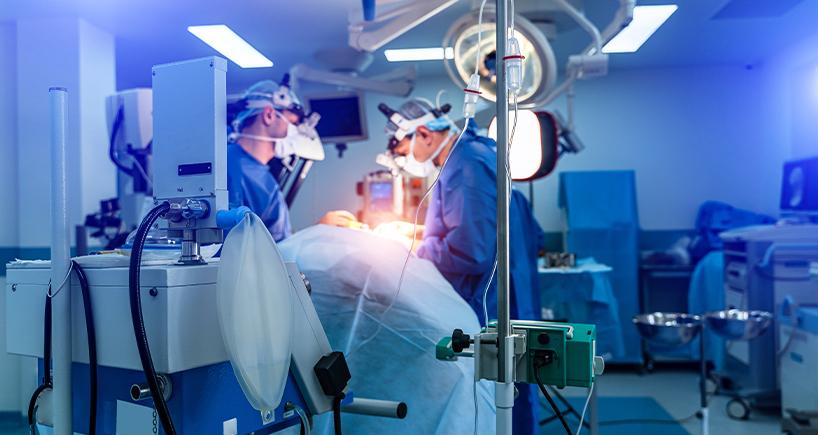Robotic thyroid surgery has become a preferred option for many patients seeking a less invasive way to treat thyroid conditions. This approach offers benefits such as no visible neck scars, greater surgical precision, and faster recovery for eligible patients. However, like any surgical procedure, it is not without risks. Being aware of possible complications helps patients make informed decisions and prepare for a smooth recovery. This post outlines what patients should know about the risks involved in robotic thyroid surgery, what makes these risks different from traditional procedures, and how they are usually managed.
What Is Robotic Thyroid Surgery?
Robotic thyroid surgery is a minimally invasive technique used to remove part or all of the thyroid gland. Instead of making a large incision at the front of the neck, the surgeon uses a robotic system to operate through smaller incisions in less visible areas, such as under the arm or behind the ear. This method improves precision and reduces the risk of scarring on the neck, which is one of the main cosmetic concerns among patients undergoing thyroid surgery.
Why Risk Awareness Is Important
All surgeries carry some level of risk, even when performed using advanced techniques. Patients considering robotic thyroid surgery should have a clear understanding of possible complications. Being informed helps them know what to expect, ask better questions, and follow post-operative care instructions more confidently.
General Risks Seen in Thyroid Surgeries
Some risks are common to all types of thyroid surgery, regardless of whether the approach is traditional or robotic.
Voice Changes or Hoarseness
The nerves that control the vocal cords are located close to the thyroid gland. These nerves can be irritated or injured during surgery, which may cause temporary or, in rare cases, long-term voice changes. Most voice changes improve within a few weeks or months.
Low Calcium Levels
The parathyroid glands, which regulate calcium levels in the body, are found near the thyroid. If these glands are disturbed or removed during surgery, the patient may experience numbness or tingling. This condition, known as hypocalcaemia, is usually temporary and managed with supplements.
Bleeding and Infection
Although rare, bleeding or infection may occur after surgery. This is typically addressed with standard post-operative care and antibiotics if needed.
Risks are More Common with Robotic Thyroid Surgery
Some risks are more specific to the robotic method due to the nature of the approach and equipment used.
Arm or Shoulder Discomfort
The robotic system often requires the patient’s arm to be lifted or positioned for long periods. This can lead to temporary muscle soreness or weakness in the shoulder or arm after surgery.
Gas Retention or Swelling Under the Skin
Sometimes, gas used to create working space under the skin may cause mild swelling or a puffy sensation. This typically goes away on its own without intervention.
Longer Surgery Time
Robotic surgeries often take longer than traditional procedures, especially in the early stages of a surgeon’s experience with the technique. While the risks linked to longer anaesthesia times are low, they are still worth considering.
Possibility of Converting to Open Surgery
In some instances, complications during the procedure may require the surgeon to switch to a conventional open surgery method. This decision is made for patient safety and is relatively rare when performed by experienced surgeons.
How Common Are These Complications?
Most complications related to robotic thyroid surgery are uncommon. When performed by skilled professionals in well-equipped hospitals, the risk of serious issues is low. Temporary problems such as voice hoarseness or arm soreness are more likely but often resolve without long-term effects. Compared to traditional thyroid surgery, the complication rates are similar, with the added benefits of improved cosmetic outcomes and faster return to daily activities.
Post-Surgery Monitoring and Care
After the procedure, patients are closely monitored for symptoms such as difficulty speaking, numbness, or swelling. Calcium levels and vocal cord function are typically checked before discharge. Most people return to their routine within a week or two, depending on the extent of the surgery and their overall health. Proper follow-up care is important for identifying and managing any delayed complications.
How Patients Can Prepare Before Surgery
Preparation plays a vital role in reducing risks and improving recovery. Patients should:
- Ask about all possible risks and how often they occur
- Understand how the robotic method works and what to expect during recovery
- Discuss their medical history in detail with the surgeon
- Clarify whether they are suitable candidates for robotic surgery
Knowing what questions to ask helps patients feel more involved and reassured about their treatment.
Conclusion
Robotic thyroid surgery is a modern technique that offers clear advantages for many patients, especially those concerned about visible scarring and recovery time. While the risks are real, they are manageable and uncommon when experienced medical teams perform the surgery. Understanding both general and robotic-specific complications empowers patients to make confident, well-informed decisions. Every medical procedure has trade-offs. With the proper guidance and preparation, patients can focus on recovery and long-term well-being with clarity and peace of mind.

